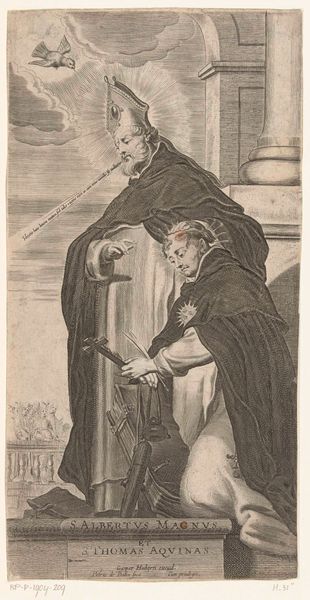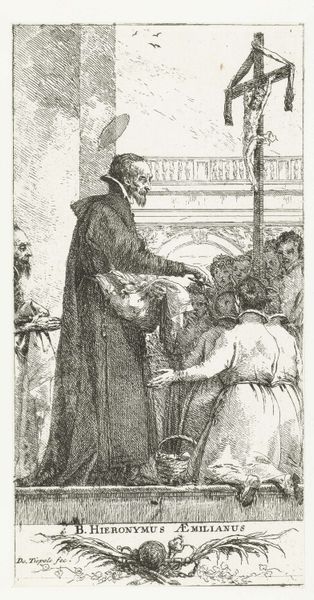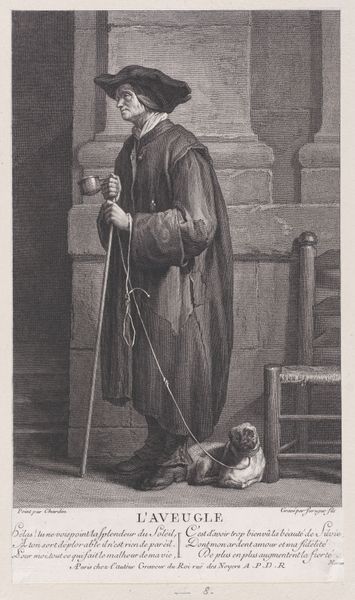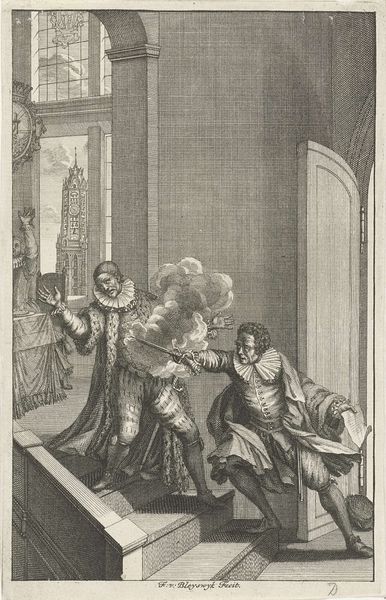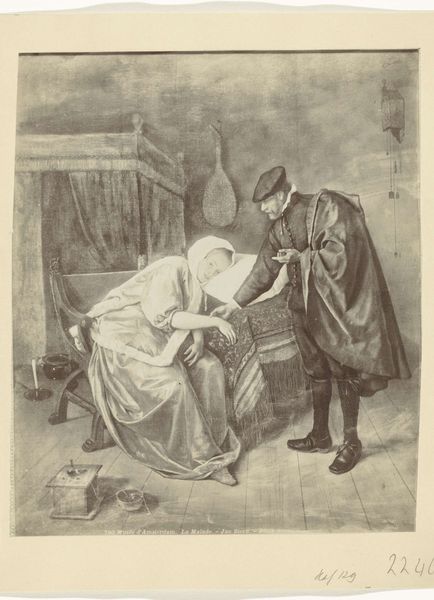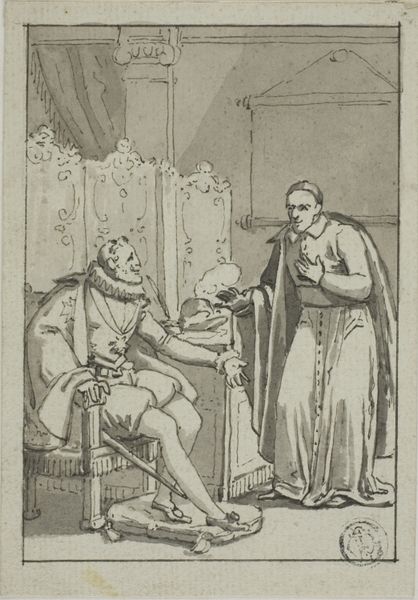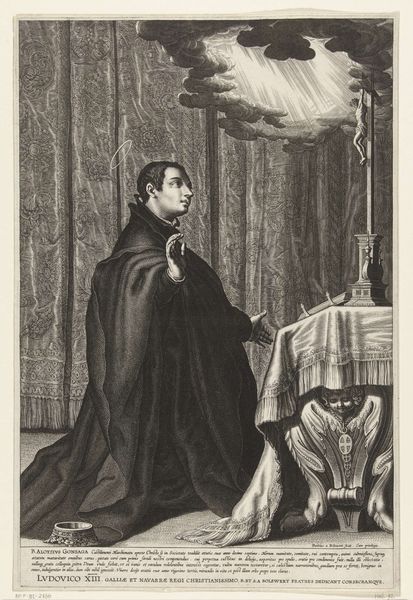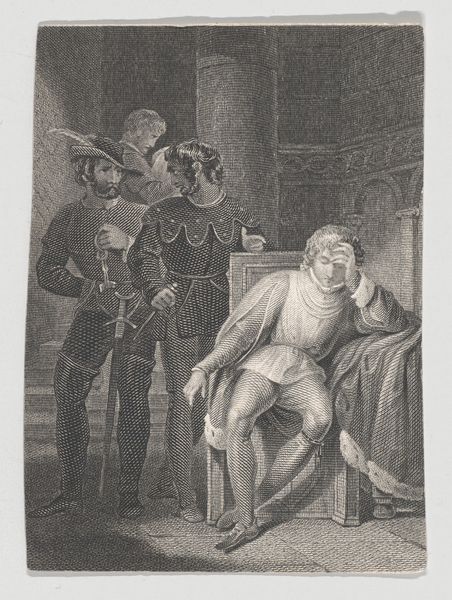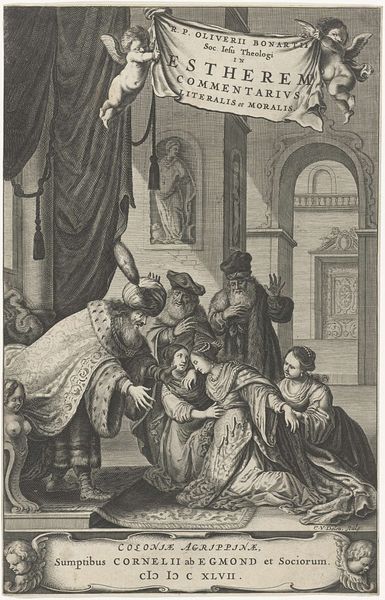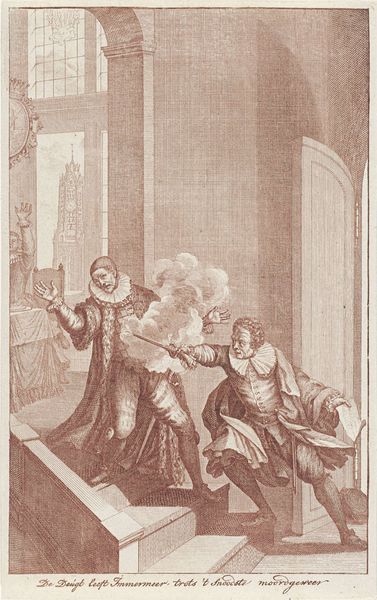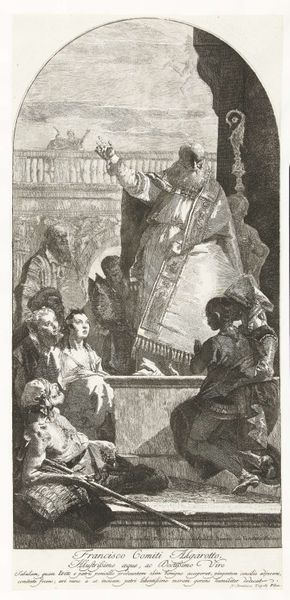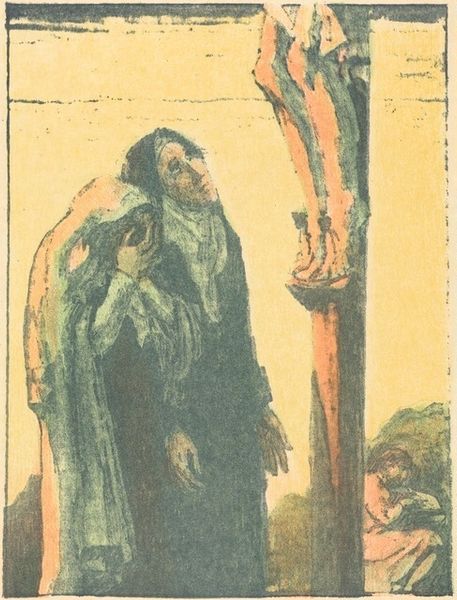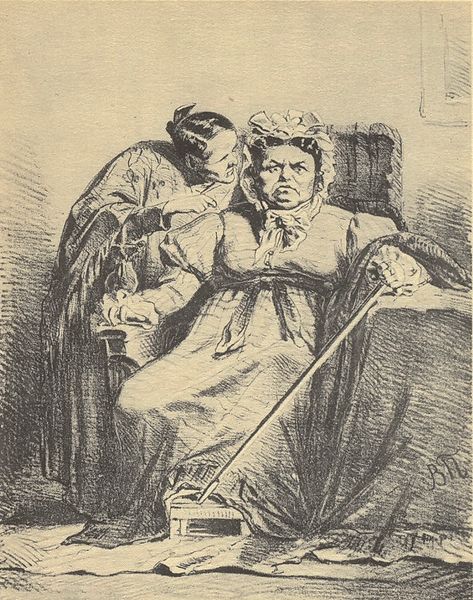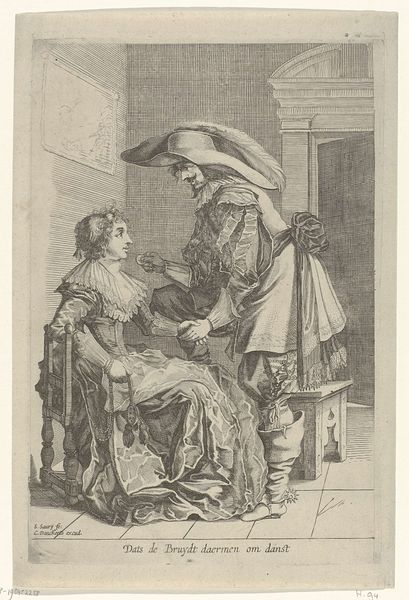
Heilige Franciscus van Paola geneest door duivel bezeten man 1750 - 1752
0:00
0:00
print, intaglio, engraving
#
baroque
# print
#
intaglio
#
old engraving style
#
history-painting
#
engraving
Dimensions: height 186 mm, width 98 mm
Copyright: Rijks Museum: Open Domain
Curator: This is "Heilige Franciscus van Paola geneest door duivel bezeten man" – "Saint Francis of Paola healing a man possessed by the devil," made between 1750 and 1752 by Giovanni Domenico Tiepolo. It’s an engraving, using the intaglio process. What are your initial impressions? Editor: It's striking. The composition is intensely theatrical. The way the saint looms over the afflicted man creates a palpable sense of power, almost like a spotlight is on him. Curator: Exactly! And think about the context: Tiepolo, in employing the print medium, allows for this imagery of divine intervention and the confrontation of demonic forces to circulate widely among the public. This wasn’t art confined to aristocratic collections. Editor: It really speaks to ideas around power, faith, and spectacle. Looking at the 'possessed' man’s ornate attire juxtaposed with the saint's humble robe – it introduces tensions concerning class and social structure. Is the devil in the fine clothes? Or is something else at play here? Curator: Well, religious imagery frequently reinforced social hierarchies. But also consider the historical narratives around hysteria and mental illness. What this print reveals is not just piety, but how societal anxieties were mapped onto marginalized bodies. Is this healing, or is it a public display of control? Editor: An important question. And considering Tiepolo's larger body of work, we might ask: What role did these images play in bolstering the Church's authority? Was it simple faith promotion, or a subtle negotiation of power in the shifting landscape of 18th-century Europe? Curator: Precisely. The visual language, while seemingly straightforward in its religious narrative, is imbued with the complex socio-political realities of its time. The dissemination of such prints created, shaped, and influenced beliefs about the church's role in their lives. Editor: Thanks for guiding us through those layers. I’m definitely seeing new complexities within the interplay of the personal and institutional dynamics depicted in this work. Curator: I hope this has offered everyone a fresh perspective on an historical work and demonstrates how the forces of belief, art, and society shape us.
Comments
No comments
Be the first to comment and join the conversation on the ultimate creative platform.
